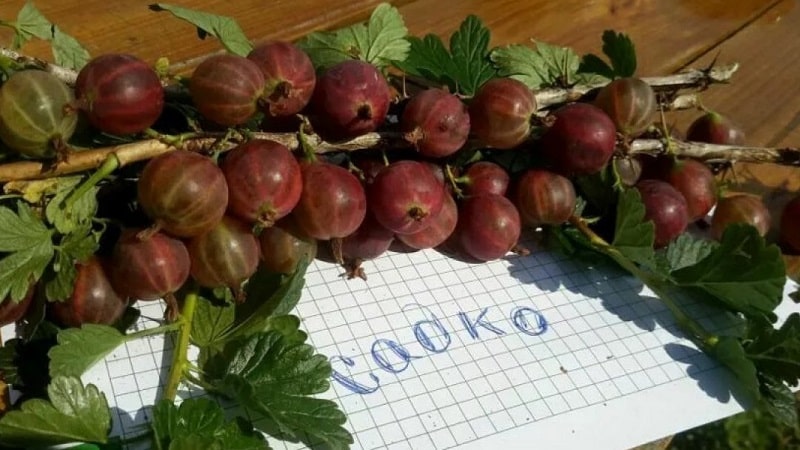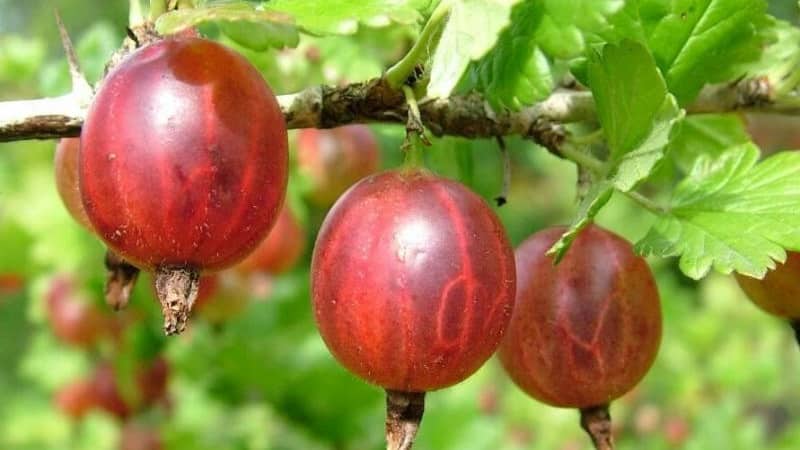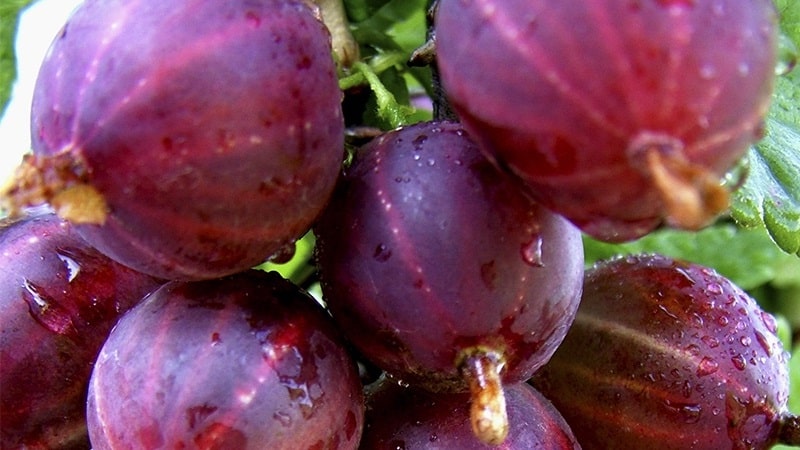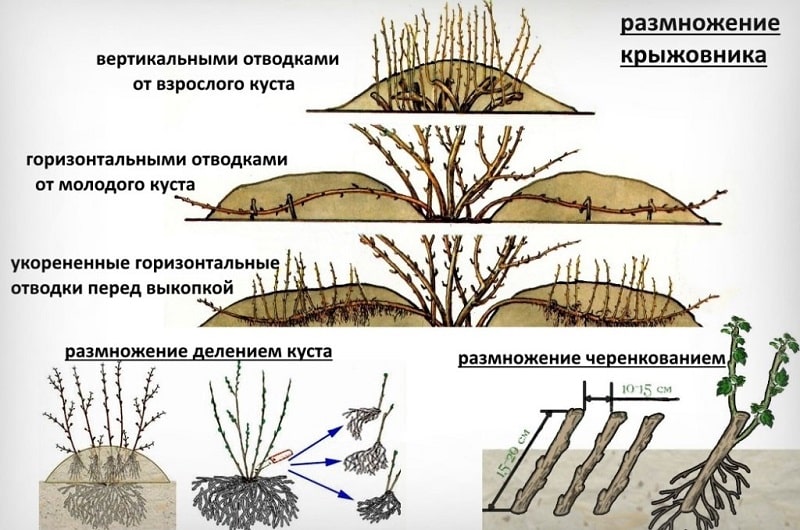Young but very promising gooseberry variety “Sadko”
The gooseberry variety Sadko was developed quite recently, but many gardeners have already been able to appreciate its benefits. The article presents the characteristics of the variety, rules for planting, care and reviews from summer residents, which will help you decide whether to plant Sadko on your own plot.
What kind of gooseberry is this?
Gooseberry Sadko is a young and promising variety that was bred for planting in the regions of central Russia. However, it showed itself well in areas with less favorable climatic conditions. The variety does not need pollinators, has strong immunity and tolerates cold well.

Brief history of origin and distribution
Sadko was obtained by crossing two parent bushes belonging to the varieties Lada and Seyanets 329-11. The research was carried out by the All-Russian Institute of Horticulture. The hybrid is still in the variety testing phase, but the results obtained indicate the success of the experiment. If initially it was bred for areas with dry summers and warm winters, now experts confidently recommend the variety for planting in more severe regions.
Characteristics and description of bushes
The height of an adult shrub rarely exceeds 1.2 m. The bush is slightly spreading, compact, erect, with strong branches. Over time it does not sink to the ground. The formation of new shoots is a distinctive feature of the variety. They grow straight, medium thickness and long. There are practically no thorns on the branches.Thin needles are found only at the base of young shoots.
Attention! The bush grows slowly. A plant is considered an adult from the age of 5. It is at this age that a sufficient number of shoots grow to collect maximum yields.
The variety has bright green saturated foliage, acquiring crimson shades in the fall.. Each leaf looks like a corrugated plate with a jagged edge, its surface is rough and velvety.
Temperature resistance
One of Sadko’s parents, the Lada variety, is distinguished by increased frost resistance. This feature was carried over to the hybrid. Sadko withstands frosts down to -30°C, as well as all seasonal and daily temperature changes. It quickly restores damaged parts of the bush that are above the ground, so the main responsibility of the gardener is to ensure a comfortable winter for the root system.
Moisture and drought resistance
The variety also performed well in dry summer conditions.. Even in extreme heat, the fruits will not wither or bake under the sun. But gooseberries do not like wetlands, so when planting it is important to take into account the location of groundwater.
Resistance to diseases and pests
There is strong immunity to the most common diseases: spotting and powdery mildew. When shoots and foliage are damaged by pests, it is quickly restored.
Characteristics and description of fruits
 Oval or pear-shaped fruits are medium in size, weighing 4-5 g. On young shoots they can weigh up to 8 g. The berries are a beautiful reddish color with a waxy coating. The skin is dense, with a distinct sourness, and veins are visible along the berry.
Oval or pear-shaped fruits are medium in size, weighing 4-5 g. On young shoots they can weigh up to 8 g. The berries are a beautiful reddish color with a waxy coating. The skin is dense, with a distinct sourness, and veins are visible along the berry.
The color of the fruit does not change during heat treatment. The thick skin does not burst when heated and tolerates transportation well.
Tasting assessment by specialists – 4 points. The fruits have a sweet and sour taste. It is noted that bushes growing in excess sunlight have much more sweetness in their berries. On average, sugar levels are 7.5%, and acid levels are 2.2%. The berries of this variety are an excellent immunostimulant - 100 g of fruit contains 25 mg of vitamin C.
Medium-late variety in terms of ripening. In the south of Russia, the harvest begins in mid-July, in the Moscow region - 2-3 weeks later. In cold regions, the fruits ripen until the end of August. From one bush you can get up to 6 kg of gooseberries, and on an industrial scale - up to 1.5 kg per 1 sq. m.
Areas of their application
The variety is universal. It is consumed fresh freeze, prepare compotes, juices, jellies, preserves and jams, make wines and tinctures.
Advantages and disadvantages of the variety
Advantages:
- Easily tolerates drought, frost and seasonal/daily temperature changes.
- The bushes are compact in size, without thorns that make harvesting difficult.
- Good immunity to common diseases and pests.
- Universal purpose of berries.
- Suitable for industrial cultivation.
- Excellent indicators of presentation, keeping quality and transportability.
The disadvantages include the following::
- Maximum yields are achieved only 5 years after planting.
- Thick skin, sour taste.
- For the first planting, it is better to use 2-year-old seedlings from the nursery, since the variety is quite young and little studied.

Growing technology
By following simple rules for planting the Sadko gooseberry variety, you can get strong, healthy bushes with maximum yields.
Optimal conditions
For this variety choose a well-lit area, protected from strong winds and drafts. According to experienced gardeners, the location of groundwater should be no higher than 1.5 m to the surface of the earth. Best for a rich harvest loamy soil is suitable with a neutral pH.
To prevent water stagnation, it is worth draining the soilusing crushed stone, sand or expanded clay. If bushes are planted in large quantities, then it is necessary to mark the rows. The interval between the bushes is 1 m. In the row spacing, trenches are made for passages of 2 m. Planting in a checkerboard pattern is allowed.
Landing dates and rules
A seedling purchased in a container can be planted at any warm time of the year.. Otherwise, planting is done in early spring or autumn. When planting in autumn It is important that there is enough heat for rooting, but that abundant foliage does not have time to form.

Basic steps:
- The soil is dug up, all debris, weeds and branches are removed. If it is necessary to reduce acidity, add lime.
- The rows are marked. The depth of the planting holes is about 50 cm. The diameter of each hole is 2 times larger than the root system.
- The soil is mixed with compost fertilizer and humus, wood ash and a complex mixture are added.
- The bush is placed in the central part, the roots are covered with earth, leaving the root collar about 5 cm to the surface of the soil. Otherwise, the plant will develop more slowly.
- Water and prune, leaving 5 buds on each shoot.
Further care
The Sadko variety is unpretentious, but requires minimal care procedures:
- Watering is carried out as necessary: when the soil dries quickly, during flowering, during the period of berry filling and when leaves fall off in the fall.The bush is not watered if the fruits are ripe. The berries may become watery and sour because not enough sugar has accumulated.
- Fertilizing is carried out annually, from the moment the first fruits appear. 1 part of completely rotted manure is mixed with 10 parts of water. The procedure is carried out 3-4 times during the spring-summer period every 15-20 days, except for the first days of June. This will extend the fruiting period of the bush to 15 years.
- Sadko is pruned when the bushes are at a dormant stage - in early spring or late autumn, after the leaves have fallen. In the middle of the season, if necessary, weak or diseased shoots are removed to a healthy area or to the root.

Possible problems, diseases, pests
The variety has strong immunity and is little susceptible diseases and pest invasion. Spotting and powdery mildew are not scary for Sadko. For preventative purposes, in the spring the bushes are sprayed with a 2% solution of Bordeaux mixture or Fitosporin.
Important! Foliage, branches, dry grass, old mulch are removed and burned in the autumn. This is done outside the area to prevent the risk of infection from diseased plants.
Sadko may suffer from spider mites, aphids, sawflies and moths. To prevent this, it is necessary to spray the bushes with Fufanon before the buds open. When bushes are damaged by pests, Sadko is treated with Actellik, Karbofos, and Vofatox.
Gooseberry variety Sadko does not tolerate stagnant water, so frequent watering can harm the bushes. It is also important to regularly remove weeds and ensure that the gooseberry foliage does not become too thick.
Wintering
In the southern regions, Sadko tolerates winter easily and does not need shelter, but in areas with less favorable conditions it is necessary to properly organize wintering. To do this, a mulching procedure is carried out; the layer should not exceed 10 cm. Spruce branches are laid around the bush. The crown is covered with breathable agricultural material and bandaged. It is important not to pull the stems too tightly: they need air to prevent them from rotting.
Reproduction
To obtain planting material without loss of variety characteristics, use vegetative propagation. Both cuttings and layering root equally well.
Divide only the bush that is older than 6 years of age. The procedure is carried out only if the bush is transferred to another area. An adult plant is not dug up solely for propagation due to the risk of its death.

Features of growing this variety depending on the region
In the process of variety testing Sadko performed equally well in various climatic conditions. Due to its frost and drought resistance, it is suitable for cultivation in many regions of Russia and the CIS countries.
It is noted that the amount of harvest is the same for both north and southHowever, in the south the fruits ripen earlier. In cold regions, it is important to properly organize wintering.
Pollinator varieties
Gooseberry Sadko does not need pollinating varieties.
Reviews from summer residents
Reviews about this variety are very encouraging. Sadko inherited from his parents exceptionally positive qualities that make it possible to grow this gooseberry in different climatic conditions without loss of yield.
Elena Markova, Moscow region: “Sadko appeared on my site 7 years ago. The variety is truly unpretentious, does not require much attention and at the same time pleases with the harvest. I prune the bushes in the spring and again after the ovaries form.This technique increases the number of fruits collected from each bush.”.
Oleg Torin, Krasnodar region: “Sadko’s fruits are sour, we make compotes from them. We store the harvest in the cellar. If the humidity and temperature conditions are met, berries picked a couple of weeks before ripeness will last up to 1.5 months.”.
Evgenia Manukyan, Ural: “The variety tolerates winter in the Urals well, but mice love to settle in the roots of Sadko, so spruce branches around the bushes are a must. Even if the bush freezes slightly in severe frosts, in the spring it is enough to remove the damaged stems. The harvest is collected at the end of August and put into conservation. Due to its thick skin and sour taste when fresh, not everyone likes this variety.”.
Conclusion
The gooseberry variety Sadko is suitable for cultivation in both the south and north of Russia. It tolerates frost and drought well, has strong immunity to major diseases and, if damaged, quickly recovers. Sadko fruits are universal and suitable for fresh consumption, freezing or canning.